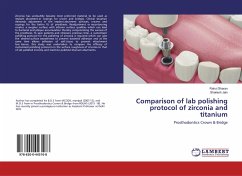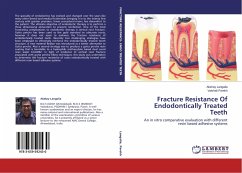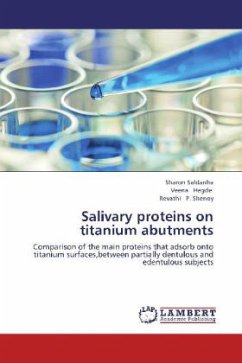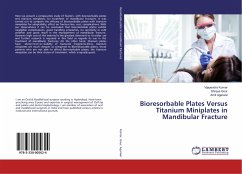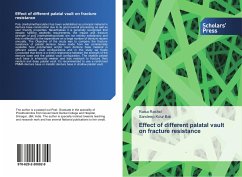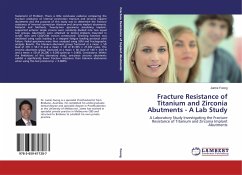
Fracture Resistance of Titanium and Zirconia Abutments - A Lab Study
A Laboratory Study Investigating the Fracture Resistance of Titanium and Zirconia Implant Abutments
Versandkostenfrei!
Versandfertig in 6-10 Tagen
36,99 €
inkl. MwSt.

PAYBACK Punkte
18 °P sammeln!
Statement of Problem. There is little conclusive evidence comparing the fracture resistance of internal connection titanium and zirconia implant abutments and the purpose of this study was to determine the fracture resistance of internal connection titanium and zirconia implant abutments. Material and Methods. Twenty-two specimens simulating implant-supported anterior single crowns were randomly divided into two equal test groups. Abutments were attached to dental implants mounted in acrylic resin and CAD/CAM crowns constructed. Chewing function was simulated using cyclic loading in a stepped ...
Statement of Problem. There is little conclusive evidence comparing the fracture resistance of internal connection titanium and zirconia implant abutments and the purpose of this study was to determine the fracture resistance of internal connection titanium and zirconia implant abutments. Material and Methods. Twenty-two specimens simulating implant-supported anterior single crowns were randomly divided into two equal test groups. Abutments were attached to dental implants mounted in acrylic resin and CAD/CAM crowns constructed. Chewing function was simulated using cyclic loading in a stepped fatigue loading protocol until failure. Failed specimens were then analyzed using SEM and fractographic analysis. Results. The titanium abutment group fractured at a mean ± SD load of 270 ± 56.7 N and a mean ± SD of 81,935 ± 27,929 cycles. The zirconia abutment group fractured at a mean ± SD load of 140 ± 24.6 N and a mean ± SD of 26,296 ± 9,200 cycles (p 0.005). Conclusions. Within the limitations of this laboratory study, one-piece zirconia abutments exhibit a significantly lower fracture resistance than titanium abutments when using this test protocol (p 0.0005).



